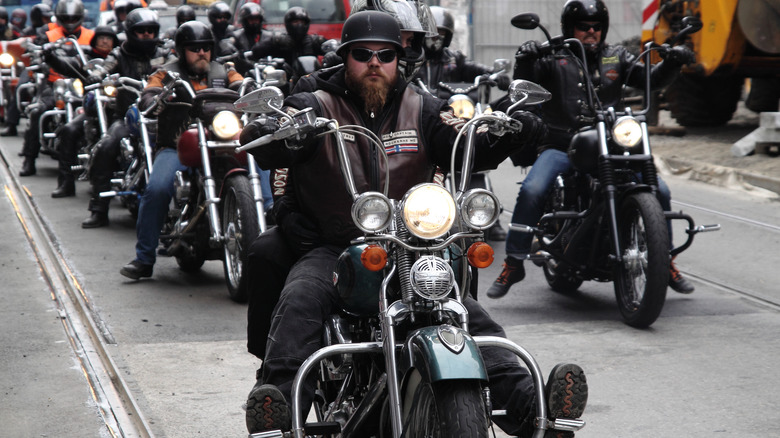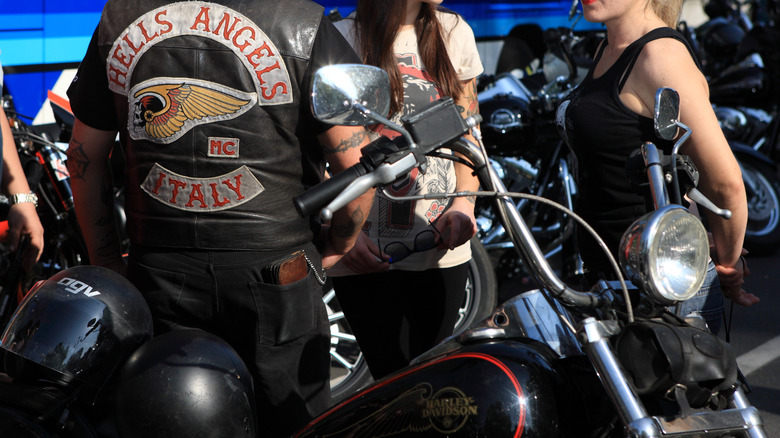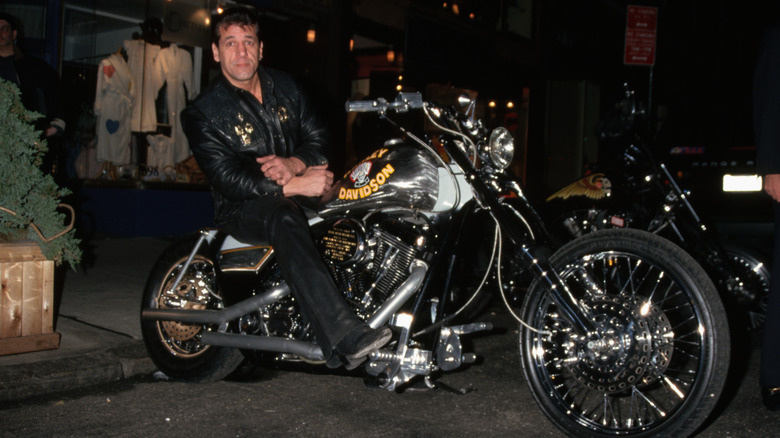Why Are Harley-Davidsons So Popular With Biker Gangs Like The Hells Angels?
Harley-Davidson didn't just become a favorite of outlaw motorcycle clubs by chance. The brand was already tied to American identity long before groups like the Hells Angels came onto the scene. During World War II, Harley produced more than 90,000 WLAs for the U.S. Army, known as "Liberators." Returning soldiers, many still restless from combat, recognized those machines as familiar and reliable. Surplus Harleys were cheap and customizable, making them ideal for young men who wanted freedom, but didn't have much money. When these veterans formed motorcycle clubs, Harley was the natural choice.
By the late 1940s, incidents like the Hollister Riot cemented the image of Harleys as loud, unruly machines linked to rebellion. That reputation only grew with movies like "The Wild One" in 1953 and "Easy Rider" in 1969, although there have been cases where the reverse happened and movies were inspired by motorcycle clubs. Clubs like the Hells Angels, founded in 1948, gravitated toward Harleys not only because they were American-made, but because they symbolized toughness, independence, and defiance. Riding a Harley became an extension of personal identity, something patched members often describe as family. Over time, the motorcycle and the culture fused into one.
Brotherhood, patriotism, and the Harley ethos
The appeal of Harleys to both motorcycle clubs and outlaw biker gangs can't be separated from the culture that surrounds the brand. Harley-Davidson has long promoted an ethos built around freedom and masculinity. Riders are often framed as modern-day cowboys: independent, rugged, and willing to live by their own code. For outlaw clubs like the Hells Angels, the largest outlaw motorcycle club in California, that image aligned perfectly with their own rejection of mainstream society. The Harley rider was a symbolic outlaw, the rebel who embodied American ideals of liberty and self-reliance.
This mythology carried real weight in the postwar decades. Harleys became icons of an America that valued loyalty and national pride. Riders often wrapped themselves in U.S. flag imagery, and the bikes themselves became symbols of patriotism. Yet, as Canadian writers like Derek Lundy and Ted Bishop observed, this cowboy ethos could feel exclusionary or even threatening from the outside. Guns, military-style hierarchy, and overt displays of nationalism were central to the Harley subculture, giving it a harder edge than other motorcycle scenes.
Loyalty, betrayal, and Harley's changing image
Outlaw bikers often argue that Harley-Davidson owes much of its success to them. Through the 1970s, when the company was struggling under AMF ownership and turning out unreliable bikes, clubs stuck with the brand. Many patched riders tattooed the Harley logo on their bodies, an extreme form of brand loyalty that few companies in any industry could match. Former outlaw James "Hollywood" Macecari has said bluntly that bikers "kept Harley alive" when nobody else wanted their motorcycles. That loyalty, he argues, amounted to billions in free advertising.
But the relationship has always been complicated. As Harley-Davidson repositioned itself in the 1990s as a luxury lifestyle brand, targeting doctors and lawyers instead of dirt-poor riders, many club members felt abandoned. Walking into dealerships, patched riders who once gave the brand its outlaw image now felt unwelcome. To them, Harley had cashed in on their culture while pushing them aside. Some even accuse the company of "going woke" in recent years, though others say Harley is simply evolving into a global brand that no longer relies on biker gangs to define its image.
That sense of betrayal doesn't erase the history, though. For many outlaw bikers, Harleys remain family, an extension of themselves, and sometimes the only possession that matters. Touching another man's Harley in a club could be as dangerous as insulting the man himself. The machine is bound up in brotherhood and identity. Even as the brand evolves, its deep connection to outlaw culture is something no amount of corporate rebranding can fully erase.


